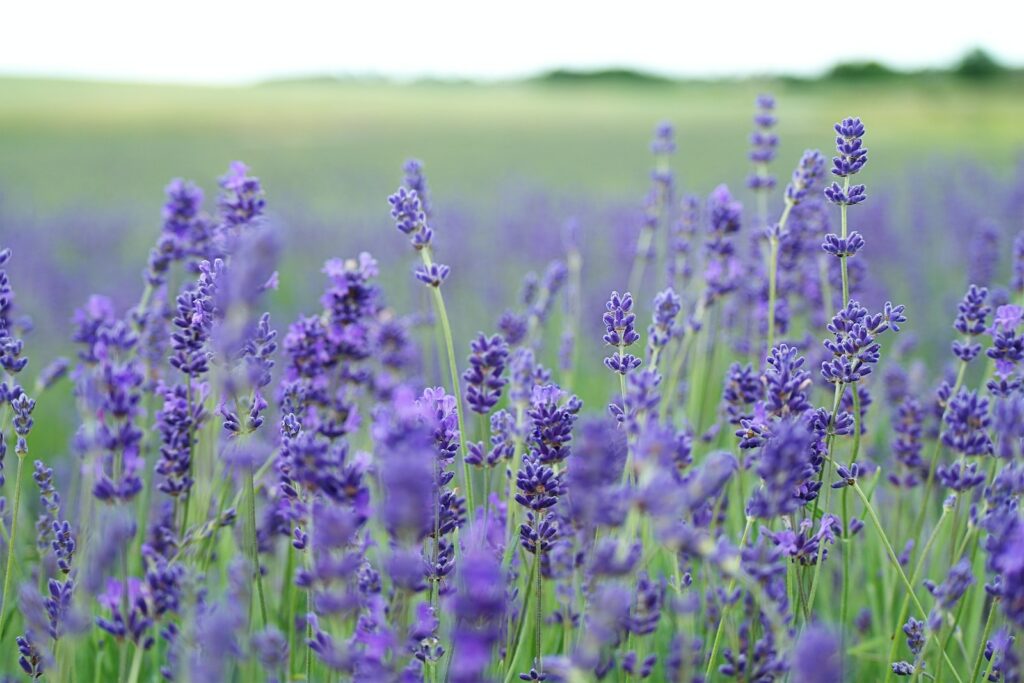Lavender is a plant that typically grows well in hot, sunny weather and well-drained soils, such as sandy soils.
These growing conditions are commonly found in desert regions, which makes lavender well-suited to thrive in such environments. So, Lavender can grow in Dubai.
Lavender is a beautiful and fragrant herb popular for its calming and soothing properties. While lavender is typically associated with the Mediterranean climate, many people wonder if it is possible to grow lavender in Dubai’s hot and dry climate.
Aside from its aromatic properties, lavender can be utilized in cuisine and beverages and for repelling insects.
Lavender plants require well-draining soil, plenty of sunlight, and moderate watering. Overwatering can lead to root rot, while underwatering can cause the plant to wilt. Lavender plants benefit from regular pruning to maintain their shape and promote healthy growth.
With proper care, lavender can thrive as potted plants inside your home during summer.
Listed Below Are The Tips For Taking Care Of Your Lavender Plant In A Pot
Select The Appropriate Receptacle
For optimal growth, lavender plants require ample room to develop, which is why they do well in spacious planters with broad rims.
When planting lavender, it’s important to use a deep container to hold a sufficient amount of soil to retain moisture.
However, it’s essential to ensure that the container has adequate drainage holes to prevent waterlogging, which can lead to root decay and the eventual demise of your plant.
To promote healthy growth, place the lavender plants near a window where they can receive plenty of natural sunlight.
Choose a planter with a light colour to help keep the plant cool from the inside.
Formulating Optimal Conditions For Growing Plants In A Pot
If you’re looking to grow lavender, starting with a healthy plant is key. When purchasing a lavender plant from a nursery or garden centre, it’s important to check if it’s in a suitable pot.
Lavender prefers a well-draining soil-less mixture, so you may need to report it if it’s not in the appropriate soil.
Adding a small amount of lime to the potting mix can also benefit the plant, but it’s best to seek expert advice.
To ensure that the plant stays hydrated and protected from extreme temperatures, it’s a good idea to line the pot with newspaper before adding the potting mix.
Adequate Hydration
It is important to provide it with adequate hydration to ensure the health and growth of your lavender plant.
This is especially crucial during the first few weeks after planting. Early morning and evening watering are optimal, allowing the plant to absorb the water before the day’s heat sets in.
Good air circulation is also important, as lavender plants thrive in the fresh air. This can be achieved by ensuring that the room or area where the plant is located is well-ventilated.
Additionally, regular fertilization is necessary as the porous soil does not hold nutrients.
Finally, pruning back about a third of the plant after it blooms can promote healthy growth and ensure the plant continues to thrive.
Is It Possible For Lavender To Endure Hot Temperatures?
Lavender is a plant that thrives in dry, sandy soils and hot, sunny weather. These conditions are typically found in desert regions, so lavender is well-adapted to these environments.
Lavender often prefers these conditions over the humidity and cold of northern temperate areas.
The plant can conserve water and withstand high temperatures, making it ideal for arid climates.
Additionally, the sandy soil helps to promote good drainage, which is essential for lavender to grow well.
With its ability to thrive in such challenging environments, lavender has become a popular plant for use in landscaping.
It has also been used for centuries in traditional medicine for its various therapeutic properties.
Is It Possible To Cultivate Lavender In A Desert Environment?
Lavender, a fragrant and versatile herb, is well-suited to desert landscapes due to its adaptability to harsh conditions.
Its native environment in the Mediterranean region features similar soil conditions to those found in desert environments, including rocky, gravelly, and alkaline soils.
Lavender’s natural ability to survive in these challenging environments is due to its deep root system, which allows it to access water and nutrients from deeper soil layers.
The herb’s leaves and stems are also covered in fine hairs that help reduce water loss through transpiration.
As a result, lavender is a beautiful addition to desert gardens and provides a hardy and low-maintenance option for gardeners looking to add greenery to their landscape.
What Type Of Lavender Is Most Suitable For Hot Climates?
If you’re looking for a plant that can thrive in hot climates, lavender from the Lavandula Stoechas family is a great option.
This family, commonly known as Spanish Lavender, is well-suited to warmer temperatures and requires minimal maintenance.
The plant can tolerate full sun and low water, making it ideal for dry climates. Additionally, Spanish Lavender is hardy and can withstand harsh weather conditions, making it a reliable addition to any garden.
This plant is functional and boasts beautiful blooms in various colours that can add aesthetic value to your space.
So, if you’re looking for a hardy and visually stunning plant to grow in a hot climate, consider the ornamental Lavandula Stoechas or Spanish Lavender.
What Is The Minimum Temperature That Lavender Can Withstand?
English lavender, also known as Lavandula angustifolia, is a flowering plant native to the Mediterranean region.
Despite its origin, this fragrant herb got its name from its popularity with English royalty, who used it for perfumes and as a remedy for various ailments.
English lavender is a hardy plant that can withstand temperatures down to -20°F, making it suitable for growing in zones 5 and warmer.
It is a popular choice for home gardens, where it can be grown in well-drained soil and full sun, and it is also used in aromatherapy and as an ingredient in various beauty and cleaning products.
With its soothing fragrance and attractive flowers, English lavender is a versatile and beloved plant that has been cherished for centuries.
Does Lavender Have A Fast Or Slow Growth Rate?
Lavender is a popular perennial plant known for its fragrant flowers and versatile uses.
However, it can take some time to reach transplanting size, with growth usually taking one to three months.
One of the biggest challenges when growing lavender is the threat of fungus, which can harm the seeds and seedlings.
Maintaining a moist soil mix while ensuring adequate air circulation is essential to minimize this risk.
This can be achieved by using well-draining soil and providing good ventilation in the growing area.
Taking these precautions gives your lavender plants the best chance of thriving and producing beautiful blooms.
Conclusion
Lavender is a plant that requires a specific set of environmental conditions, including a mild temperature range, moderate humidity, and well-draining soil.
While Dubai’s weather does not meet these requirements, there are ways to grow lavender in the region.
These include providing ample shade, frequent watering, and using soil amendments to improve drainage.
Additionally, some varieties of lavender are more tolerant of high temperatures and drought than others, and these may be more suitable for cultivation in Dubai.
With proper care and the selection of appropriate cultivars, it is possible to grow lavender in Dubai.








